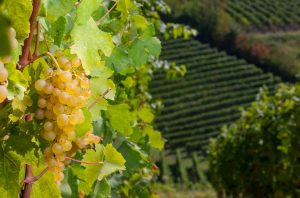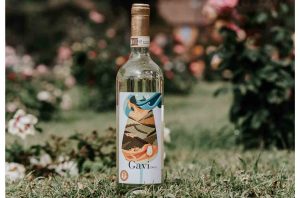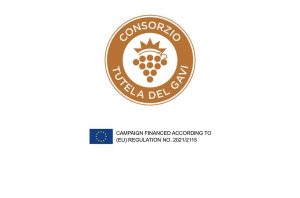Born of the ancient Piedmontese soils close to the Ligurian border, Gavi is far more than simply a varietal expression of the Cortese grape. On the contrary, it represents a synergy between local soils, vine aspect, elevation, and climate. It offers an authentic – and inimitable – taste of the Piedmontese landscape in northern Italy.
But what, exactly, makes a wine authentic? A range of aromatics that go beyond fruit flavours is definitely part of it – an undeniable sense of place. In other words, a style that reflects its terroir with a razor sharp and uncanny precision. Gavi is such a wine. Its vineyards are situated only an hour’s drive from Barolo, in a spectacularly beautiful and mountainous area. Indeed, there is much to enjoy in the bucolic splendour of the region; vines are planted in a never-ending series of rolling hills, where vineyards alternate between forests, meadows, fields, and wide valleys that rise to the tops of the mountains, overlooking the Ligurian Sea.

A mosaic of terroirs
Today, there are approximately 1,600ha of prime vineyards cultivated in the Gavi DOCG, created in 1998. It is a superlative place to grow vines: metamorphic rock fragments have been eroded from the mountains over the centuries, transported by rivers and glaciers that deposited alluvial matter, gravel, and flint into the region. These well-drained terroirs, rich in mineral deposits, also reflect heat back into the vine canopy, yielding ripe and highly aromatic fruit clusters. Meanwhile, the white limestone offers a perfect balance between moisture retention and drainage.
Yet there is an important distinction between the white soils of the region and the heavier clay terrain, which drains more slowly. That fact, combined with variances in aspect and elevation, ensures that no two bottles of Gavi are completely alike. This is terroir at its most potent: where it makes a difference in the glass. Some of the appellation’s most fragrant and fresh whites, for example, have their origins in calcareous soils; vines grown on heavier clay tend to yield a more sturdy and concentrated expression of Cortese, with exceptional length.

The many different styles of Gavi
Many aficionados, of course, will already be familiar with the classic profile of a young Gavi wine. It is simply delicious: a rich mouthful of citrus, melon, and stone fruit, enlivened with ripe acidity and a distinct cut of minerality – the finish is very crisp and saline. However, Gavi is not only about instant gratification. Armed with bright acidity and a powerful structure, Cortese can evolve into glorious maturity, revealing a mosaic of tertiary flavours that riff on honeysuckle, hazelnuts, and lanolin. High-quality classic method sparkling wines are also made in the DOCG.
Diversity is Gavi’s core strength, and yet there is a specificity to every bottle produced in the zone. You don’t have to see the label to recognise that what you’re tasting is something exceptional and unique. Close your eyes and be transported to the inimitable, ancient geology of this part of Piedmont. Truly, that is the magic of Gavi.
Discover more about Consorzio Gavi
Connect on
Facebook | Instagram | YouTube








